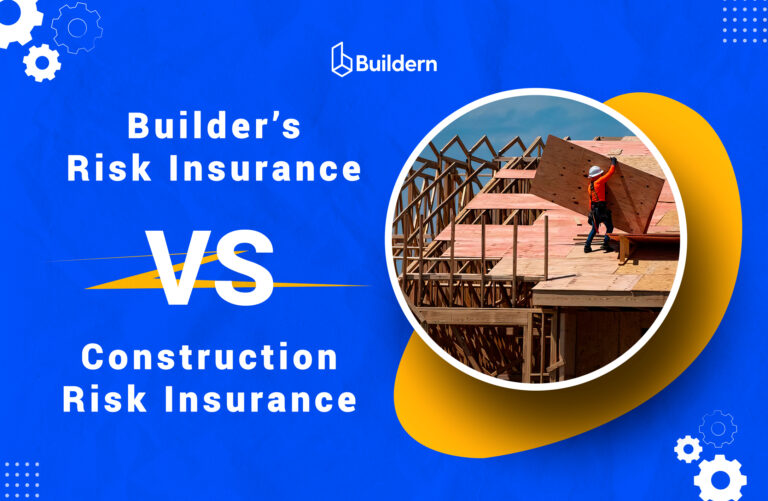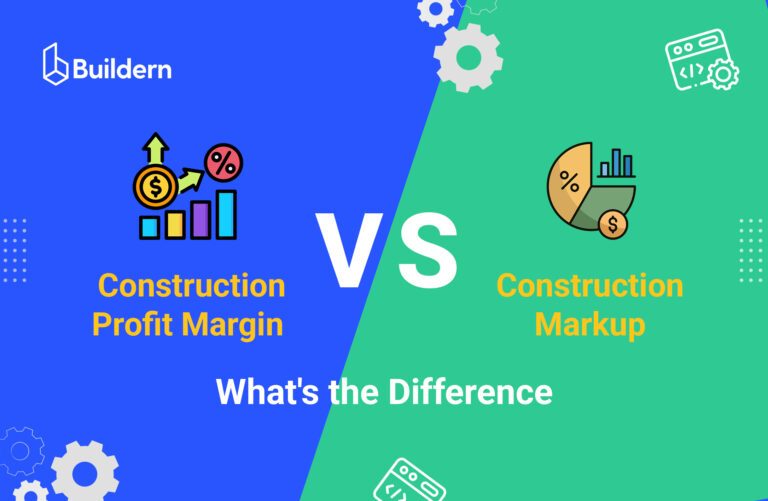What Makes Construction Marketing Work: 7 Proven Tactics to Try in 2025

Why do some construction companies attract hundreds of clients while others struggle to secure leads?
The construction marketing strategy that the company has adopted can be one of the answers. A successful marketing plan isn’t only about driving traffic to the website or getting more calls and emails. Even if a company pours thousands of dollars into ads, that does not guarantee meaningful results.
What is important? Planning a construction marketing strategy that builds trust and a strong reputation. The focus must be on the proper positioning of services and highlighting the value through testimonials, case studies, and transparent reporting using construction management software tools. Building trust one project at a time, the construction business will naturally attract more clients and will stand out.
Table of Contents
- What Drives Construction Marketing Results
- Construction Marketing vs. Traditional Marketing Tactics
- 7 Marketing Channels That Make the Change
- Metrics for Construction Marketing Strategies
- Which Social Media Content Converts?
- Why Most Construction Marketing Strategies Don’t Lead to Projects
- Final Thoughts

What Drives Construction Marketing Results
In construction, lasting success comes from building trust through proper communication with clients. A strategy to attract clients combines several key elements. Clear positioning, a highly converting website, and experiences of past clients are working hand in hand. The ultimate goal is to build a reputation and convert leads into loyal clients.
Clear Positioning That Speaks to the Right Clients
Effective construction marketing that works begins with a clear understanding of who the right clients are. For some builders, that means homeowners planning custom dream homes. For others, the main target is a restaurant or a hotel owner. Each audience has different concerns, and the messaging should reflect them.
The specific concerns of the client should be communicated when working on marketing for a construction company. Narrowing the focus helps target the right audience, especially if the builder is operating in such categories as luxury custom homes or green building. Clear positioning filters out mismatched leads and attracts the right clients.
Marketers should ensure their website and social media channels contain real-time information. Documented success stories and project portfolios demonstrate credibility. After all, homeowners are not just buying a structure but a smooth, high-quality service. The goal is to address client pain points like on-time delivery, a transparent tracking process, and organized documentation.
Website Turning Visitors into Projects
A credible website with relevant calls to action is a part of the positioning of the construction brand. Clients do not come just to browse; they come looking for clarity. A credible website signals professionalism and attention to detail. The key is to point to the client’s concerns instead of simply listing the services. It’s better to have information on budget clarity, communication tools, and the use of construction management software tools.
Polished text rarely wins over a skeptical client. Using more visuals is essential: photos and walkthrough videos, footage from in-progress projects, and videos of success stories speak volumes. This is far more useful together with a great text. The more the client sees, the easier it is to imagine working with the construction business.
A good website’s goal is not to inform but to guide. The website that converts should offer next steps, keeping CTAs short, visible, and relevant. No one wants to dig into long “contact us” forms. The path to conversion should be short so clients can act while interest is high.

A Client Experience That Markets Itself
One of the most powerful services a builder can offer is a smooth, low-stress experience. The way a construction expert defines a process from day one matters. Professionalism shows early, and it sticks. Therefore, timelines, touchpoints, and deadlines are an essential part of delivering reports to the client.
At the end of the day, it always comes back to communication. Professional builders who check in regularly, answer questions quickly, and explain next steps are likely to win more loyalty than those who only respond to issues.
If client experiences are smooth and outcome-driven, the builder will get more referrals. Happy clients do not just say thanks, but hire you for the next project.
Construction Marketing vs. Traditional Marketing Tactics
As compared with other industries, construction marketing follows a different scenario. Unlike consumer products and quick service, these projects are high-investment decisions.
Another key difference is the audience. These businesses typically work for a narrower client base. This requires highly specific messaging that speaks the language of each segment and addresses their unique concerns.
Most importantly, the strategy should be planned to match long decision cycles. Decision-making in construction may take months or even a year, and the way you manage communication at every stage can make or break success.
At the top of the funnel, the focus is on social media, SEO, and local listing to make the company discoverable. In the consideration stage, the goal shifts to showing expertise. Educational content, case studies, and visual portfolios demonstrate capabilities.
Post-project communication is also essential. Happy clients mean you have repeat customers and more referrals. It’s about staying top of mind without being too pushy. For example, send a quick message on a project anniversary or share useful maintenance tips.

7 Marketing Channels That Make the Change
While the word-of-mouth approach remains powerful, most clients start searching online. A solid website is only a part of the task. A consistent construction digital marketing strategy is what pushes potential clients to find a particular builder.
The focus should not be on noise, but on building trust and showing real work. The marketer’s task is to make a simple path to the company’s services, guiding clients from interest to action. The right marketing does not feel like marketing, but a smooth conversion flow.
1. Local SEO
Clients start their search journey from a Google listing. If it’s incomplete or unclear, it’s easy to get overlooked even if you’re the best GC in the town.
Homeowners usually do not search for a contractor. They are searching for a “custom home builder in Jacksonville” or “general contractor near Chicago”. Local search engine optimization helps show up in high-intent searches. This turns the search into a site visit and eventually into a demo booking.
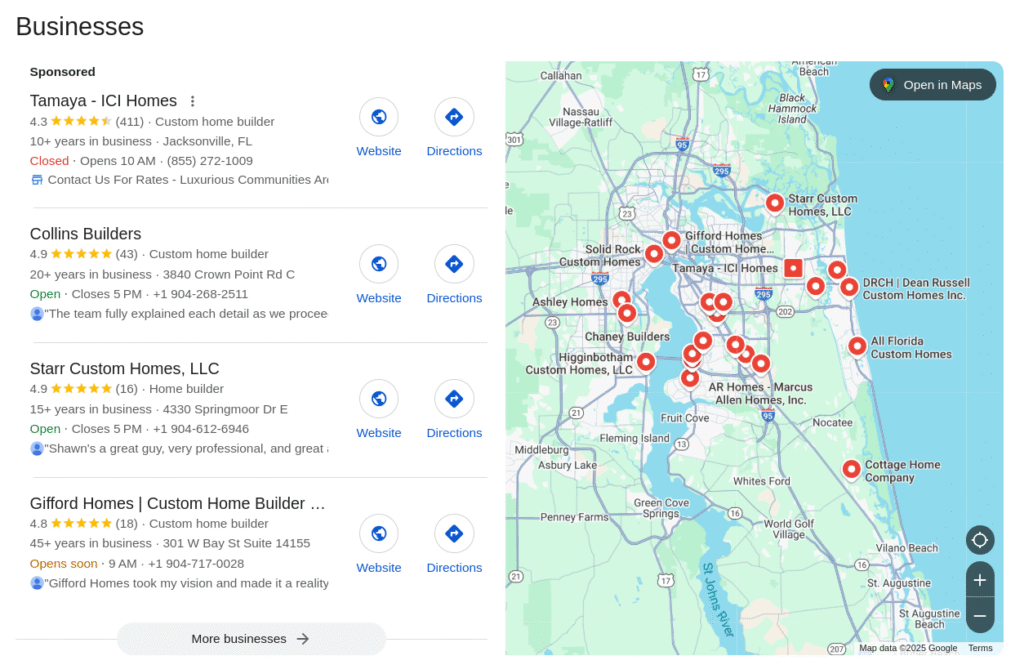
2. Search Area Pages
Search area pages on the website are also a part of bringing in more leads. They help construction company websites show up in the suburbs and districts where the actual clients live.
Good SEO is not targeted at the engine but at humans having real questions and seeking answers. Real people read reviews and take action if the services, especially those located near them, match their needs.
3. Social Platforms Fit for Construction Brands
Construction companies were not always the most active voices on social media, but that’s changing fast. Short videos and picture-based formats are giving builders a space to show their workflow. Reels featuring real-life projects and construction sites are getting attention for all the right reasons.
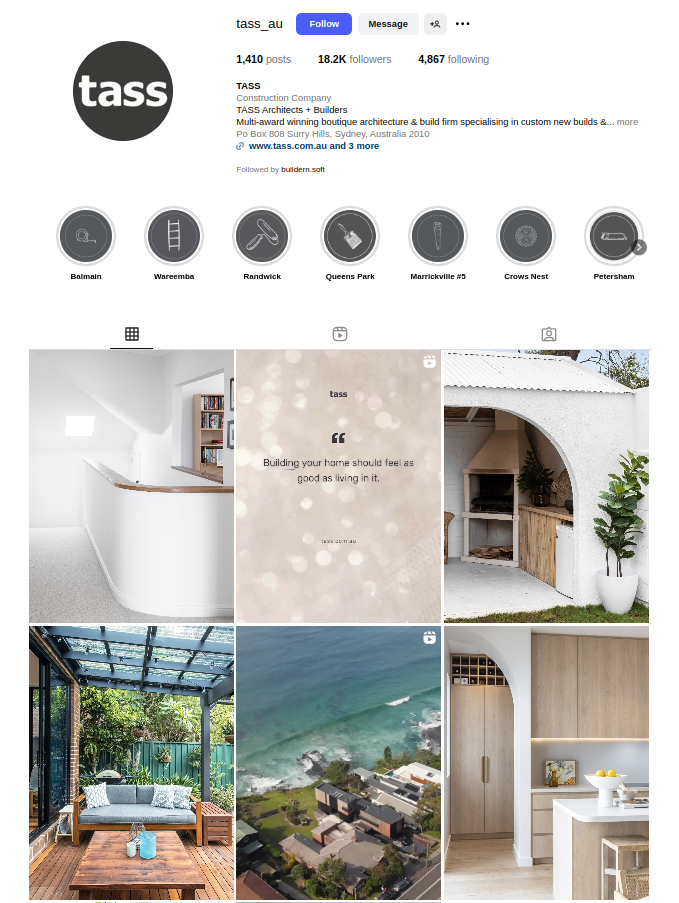
This means the popular channels are not only Facebook and YouTube as they used to be, but also Instagram and TikTok. The homeowners are scrolling through before-and-after shots that show how the best job gets done.
4. Email Updates and Lead Nurturing
How can emails nurture leads?
Clients who think about a renovation project sometimes spend months gathering data.
A smart strategy is to keep the company top of mind. Someone who booked a demo or downloaded a guide might not stay with the company. However, this does not mean the lead is lost. Consistent email marketing targeted at educating the client and providing valuable information can build trust.
5. Visual Case Studies
Some construction companies avoid telling the real scope of completed work and miss deadlines. Not the best way to keep the client they have been working with for months. Transparency is the right tactic to keep the project in the spotlight.
Completed visuals of the previous projects demonstrate your capabilities and are clear examples of work quality. Project milestone records should also act as part of a marketing campaign. This especially applies to such sensitive issues as budget and change orders. Nothing speaks louder than keeping the clients in the loop about the ups and downs of the project, especially when things do not go according to plan.
6. Keeping Clients in the Spotlight
Sending letters and later emails used to be a traditional way of keeping the client informed. Today, a reliable construction means visible case studies and clear communication channels.
The best way is to have a software platform that has it all. For example, Buildern offers a construction client portal with visual charts featuring real numbers and real timelines. This minimizes the risk of leading the construction into a stalemate. The homeowner becomes a part of the process, not an observer with access to proposals, change orders, and daily logs.
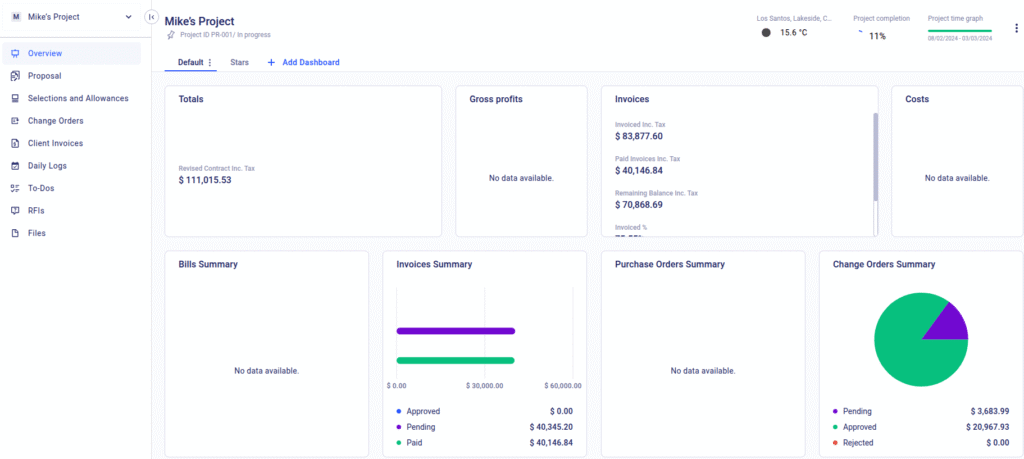
7. Real-Time Data
Marketing runs on data, and this is not up for debate. Without data, it’s just guessing, which makes the client even more skeptical.
Providing vague data never wins, and the client should get all necessary information in due time. It’s not simply for record-keeping but for managing the budget and planning further steps. Simplified communication, detailed scheduling, transparent bidding process, and organized documentation are among the benefits of construction management software.
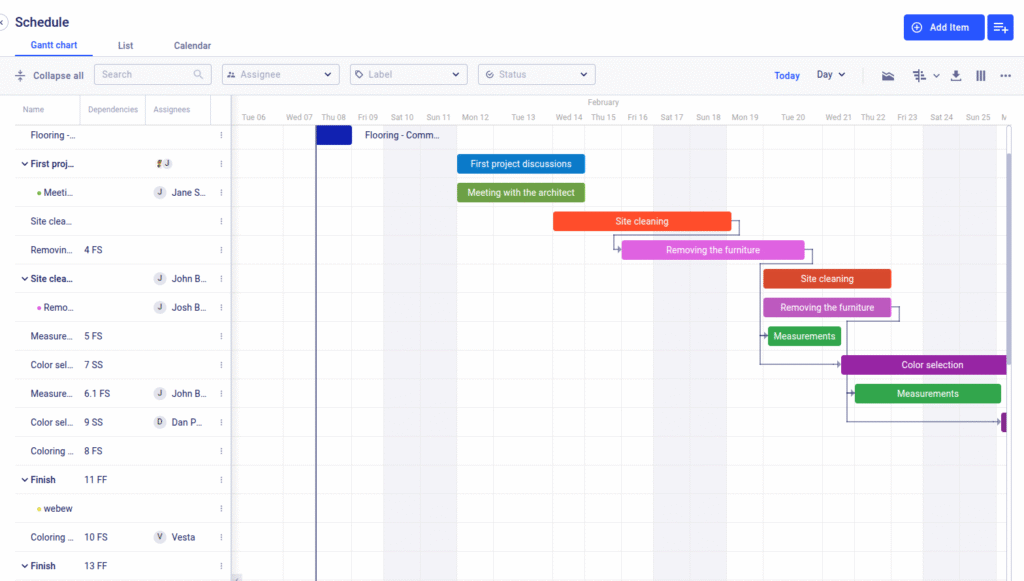
For example, contractors can create a construction project schedule, setting task dependencies. If the site cleaning falls behind schedule, color selection and other works automatically shift to a later date. In this case, misunderstanding and last-minute shifts are minimized as the chart or calendar (depending on the way you want to see information) keeps the project organized.
Metrics for Construction Marketing Strategies
Any construction project will not move forward without clear figures. Material estimates, job costing, milestones, and timelines are the backbone of construction KPIs. The same applies to construction marketing. The figures show whether the efforts were worth taking, or it’s time to make some changes for more tangible results.
In marketing, it’s essential to calculate how much to spend on marketing efforts to gain a new client. Without analyzing marketing metrics, you are likely to waste resources.
Just as the construction expenses need to be justified, the following metrics determine if the marketing plan was a success.
| Metrics | What it Measures | Why It Matters |
| Cost Per Acquisition (CPA) | Total marketing spend/ number of clients signed. | Shows how much the company spent to convert leads. |
| Cost Per Lead (CPL) | Amount spent on marketing/number of leads. | Evaluates how efficiently the company attracts interest. |
| Lead to Customer Conversion Rate | Percentage of leads that turn into paying clients. | Indicates how well marketing works to turn interest into revenue. |
| Customer Lifetime Value (CLV) | Average customer value X average customer lifespan. | Helps justify acquisition costs and make a long-term revenue forecast. |
| Website Conversion Rate | Percentage of website visitors who take action. | Shows if a website is effective in bringing new clients. |
| Social Media Engagement Rate | Reach, shares, likes, and comments on different social media channels. | Helps in assessing how compelling the social media content is for the target audience. |
Having these figures helps in understanding how to continue marketing efforts or if it’s time to shift from one construction marketing plan to another.
Which Social Media Content Converts?
It hugely depends on the platform, but each has unique advantages if used with the right approach. Instagram, with its diverse audience, remains an effective channel for visibility. Before-and-after photos, in-progress site walkthroughs, or time-lapse clips demonstrate the quality of work and let you make quick updates.
TikTok’s casual tone is perfect for a day-in-the-field content or how-to tricks that show some outstanding skills. Polished marketing doesn’t always perform well here. It’s better to choose raw footage of siding installation or concrete pouring.
Across Instagram, TikTok, and YouTube, short videos remain a leading format. The difference is the tone of voice. However, YouTube has the advantage of having long-form content, which pays off if used consistently. For example, builders can create a library of videos explaining their process, showing different stages. YouTube also boosts SEO, helping the company show up in both search and video results.
Meanwhile, LinkedIn works best for building professional authority. Rather than consumer-focused content, this channel highlights builders’ milestones like signing new agreements or receiving an award. It’s ideal for sharing professional tips and B2B connections (shout-out to subs or team members).
Why Most Construction Marketing Strategies Don’t Lead to Projects
How can one stand out among over 3 million construction businesses in the U.S.? Simply getting seen is not the right marketing approach. Some companies may get noticed but fail to land projects. Without a mix of visibility, consistency, and structure, marketing for a construction company is likely to fall short.
Promising unrealistic timelines like building a house in two weeks isn’t the way to win clients. Instead, it’s better to show real proof. For example, offering clear project tracking visuals sounds like a better approach.
Let’s figure out which common mistakes to avoid when crafting a construction marketing plan.
Focus on Visibility
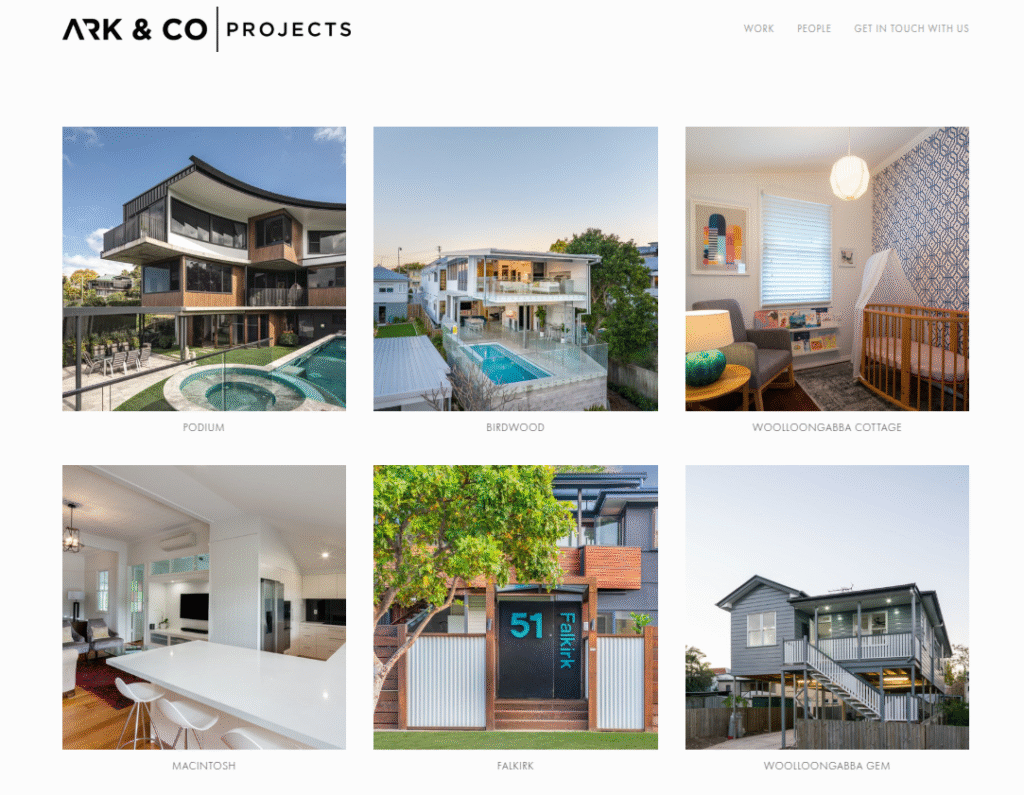
It’s important to avoid situations when potential clients browse but take no further action.
SEO, ads, and social media are great for visibility, but may not be enough to land a client. Focusing solely on numbers can leave the company with leads that never convert.
The traffic is important, but the proof of quality is what really matters. Showing past success stories is more important for potential clients who clicked on ads or saw a banner.
Clients value clear evidence, such as case studies, testimonials, and videos from real projects. This is the way the construction business builds real trust and relationships.
💡 Prioritize visuals showing quality over driving traffic numbers.
Put the Right System Behind the Effort
Construction marketing is more than creating stand-out logos and colors for a brand. The clients first think about the quality of work and customer service when choosing among hundreds of competitors.
Hiring a marketing team for several months to create a short-term content plan is not a solution. Inconsistent efforts may ruin even a well-prepared, detailed construction digital marketing strategy. The social media strategy or several blog posts will impact visibility, not the long-term reputation.
It’s no secret that without tracking, follow-ups, and post-project reviews, there is no clear marketing workflow. A lack of a systematic approach means good leads slip away, and projects remain unfinished.
💡 Establish a consistent long-term marketing workflow rather than relying on a short-term content plan.
Referrals Are Powerful, But Not Predictable
The best marketing strategies should go beyond relying solely on referrals. Word-of-mouth may help you secure a few leads, but it’s unpredictable. Besides, depending heavily on the idea that one project will lead to another is to put your company in a bad position. This may work at the early stage of the construction business; however, it’s a risky approach, as there is no control over how and when the clients will refer to a particular company.
A successful firm is better off to have a balanced construction marketing strategy that combines referrals with scalable tactics, including a solid website, social media channels, and testimonials.
Clear communication with clients is a proactive approach. The company using construction CRM software can manage client relations and track progress instead of waiting for random referrals.
💡Referrals work better in pairs with proactive communication tactics.
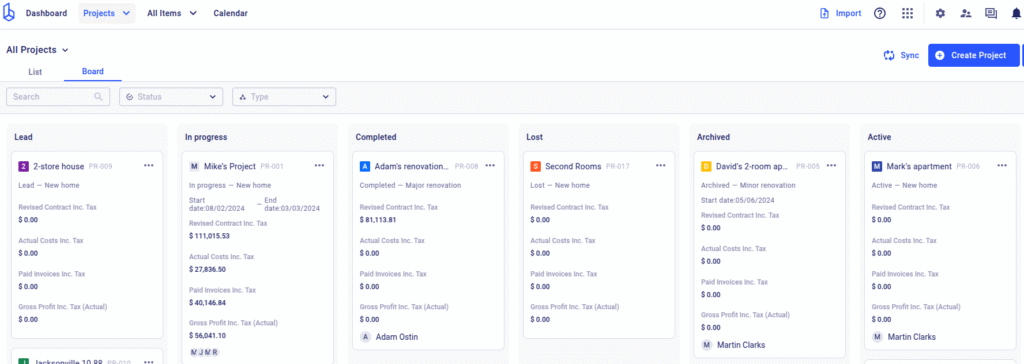
Final Thoughts
In the construction industry, marketing is based on building trust and delivering seamless experiences rather than unrealistic promises. Smooth communication and real-time reporting give a client a real picture of the construction process.
The company’s competitive edge is to use construction software management tools. Buildern offers a comprehensive tool stack ranging from project management to financial management, which is a construction company’s strongest selling point. When the construction experience is smooth and transparent, the marketing takes care of itself.

